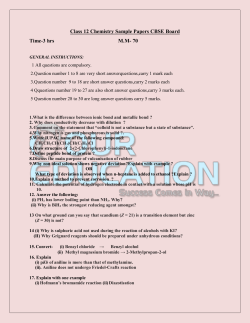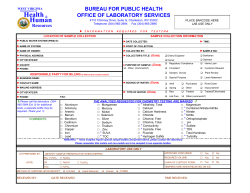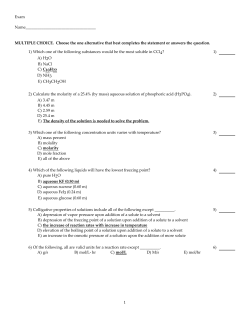
Unit 6 Review - passchemistry.com
Chemical Equations Test Review Part 1: Directions: Fill in each blank with the correct term from the word list below. arrow exothermic chemical equation ionic equation chemical reaction precipitate coefficient product decomposition reactant delta () single replacement double replacement spectator ion electrolysis synthesis endothermic Another name for a chemical change is a(n) __(1)__. Such a change can berepresented by means of a written statement called a(n) __(2)__. The symbol forthe word “yields” in such a statement is a(n) __(3)__. Any substance written to the left of this symbol is called a(n) __(4)__. Any substance written to the right of this symbol is called a(n) __(5)__. A number written just to the left of a chemical formulais called a(n) __(6)__. A chemical change in which energy is absorbed is called a(n) __(7)__ reaction. One in which energy is released is called a(n) __(8)__ reaction. Some chemical changes involve charged particles. An equation that shows the reaction or production of such particles is called a(n) __(9)__. Any charged particle that is present in the solution, but that does not react during a reaction, is usually omitted from the net equation; it is called a(n) __(10)__. A chemical change in which two or more substances combine to form a more complex substance is called a(n) __(11)__ reaction. A change in which a substance is broken down into simpler substances is called a(n) __(12)__ reaction. Any such change that is caused by the flow of electric current is called __(13)__. If the change is caused by heat supplied to the reaction, the Greek symbol __(14)__ is often written above the “yields” symbol in the equation. A chemical change in which one element replaces and releases another element in a compound is called a(n) __(15)__ reaction. A chemical change in which there is an exchange of ions between two compounds is called a(n) __(16)__ reaction. A solid substance produced by such a reaction is called a(n) __(17)__. Part 2: IDENTIFY THE TYPE OF REACTION AND BALANCE THE EQUATION: 18. Sb + I2 SbI3 22. AlCl3 + Na2CO3 Al2(CO3)3 + NaCl 19. Li + H2O LiOH + H2 23. HNO3 + Ba(OH)2 Ba(NO3)2 + H2O 20. AlCl3 Al + Cl2 24. Al + Pb(NO3)2 Al(NO3)3 + Pb 21. C6H12 + O2 CO2 + H2O Part 3: IDENTIFY THE TYPE OF REACTION & WRITE A BALANCED EQUATION (INCL. STATES): 25. Aqueous solutions of ammonium chloride and lead(II) nitrate produce lead(II) chloride precipitate and aqueous ammonium nitrate. 26. Solid carbon disulfide burns in oxygen to yield carbon dioxide and sulfur dioxide gases. 27. Iron metal reacts with aqueous silver nitrate to produce aqueous iron(III) nitrate and silver metal. 28. Solid potassium nitrate yields solid potassium nitrite and oxygen gas. 29. Calcium metal reacts with chlorine gas to produce solid calcium chloride. 30. Fluorine gas added to aqueous potassium chloride produces aqueous potassium fluoride and chlorine gas. 31. Phosphorous reacts with oxygen gas to produce solid diphosphorous pentoxide. Part 4: IDENTIFY THE TYPE OF REACTION, PREDICT THE PRODUCTS (STATES NOT REQUIRED), AND BALANCE THE EQUATION: 32. Al(s) + NaOH(aq) 33. C2H4(g) + O2(g) 34. FeCl2(aq)+ K2S(aq) 35. Ba(s) + O2(g) 36. NH4NO3(aq) + NaCl(aq) 37. SO2(g) 38. Magnesium metal is added to aqueous hydrochloric acid. 39. Potassium metal is combined with chlorine gas. 40. Aqueous solutions of potassium bromide and silver nitrate are combined. 41. Solid mercury(II) oxide breaks down into its component elements. Part 5: Write balanced chemical, complete ionic, and net ionic equations for each of the following reactions. Assume all reactions occur in aqueous solution. 42. BaBr2(aq) + Na2SO4(aq) 43. AgNO3(aq) + MgI2(aq) 44. Ni(NO3)2(aq) + NaOH(aq)
© Copyright 2025










